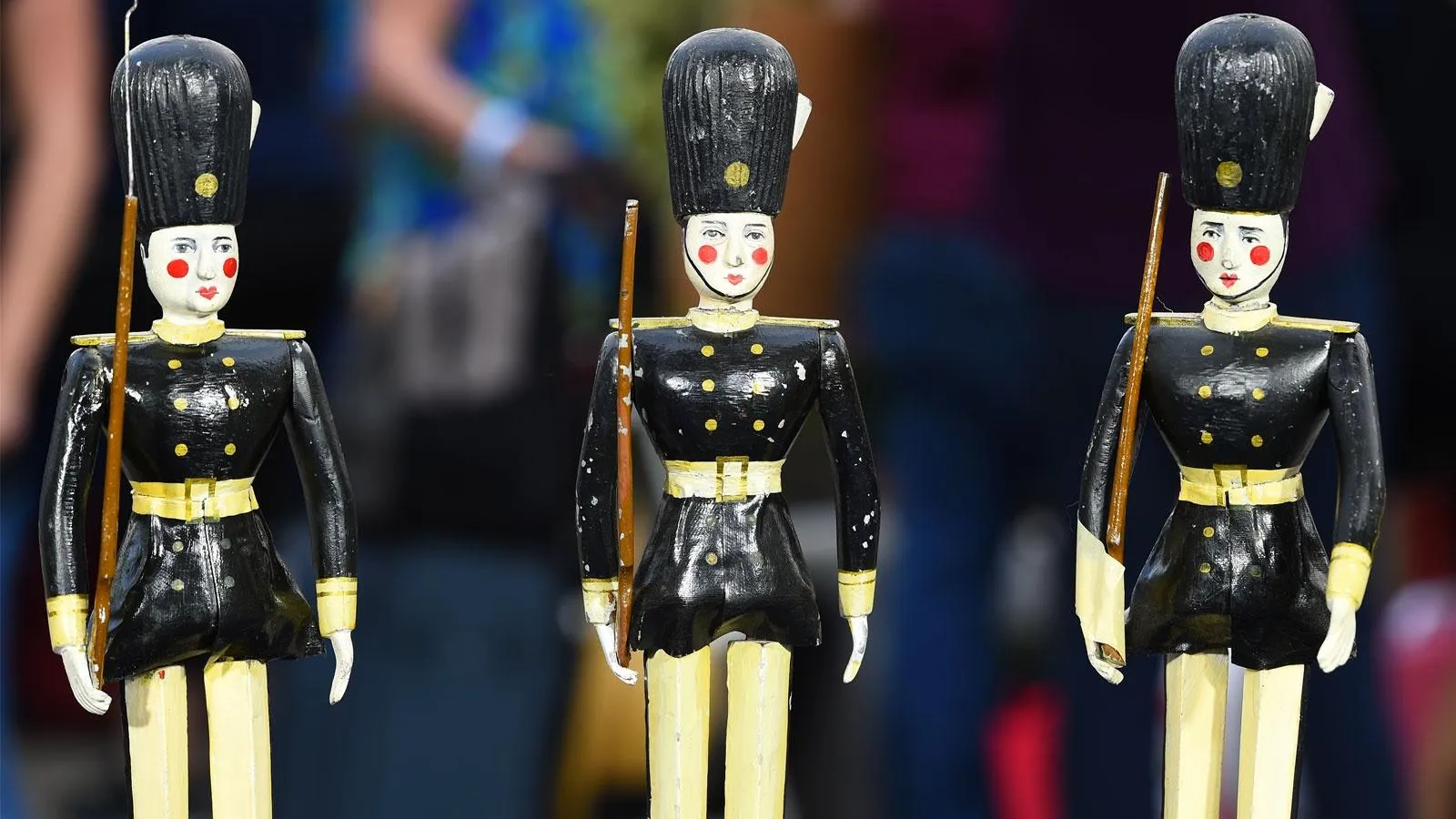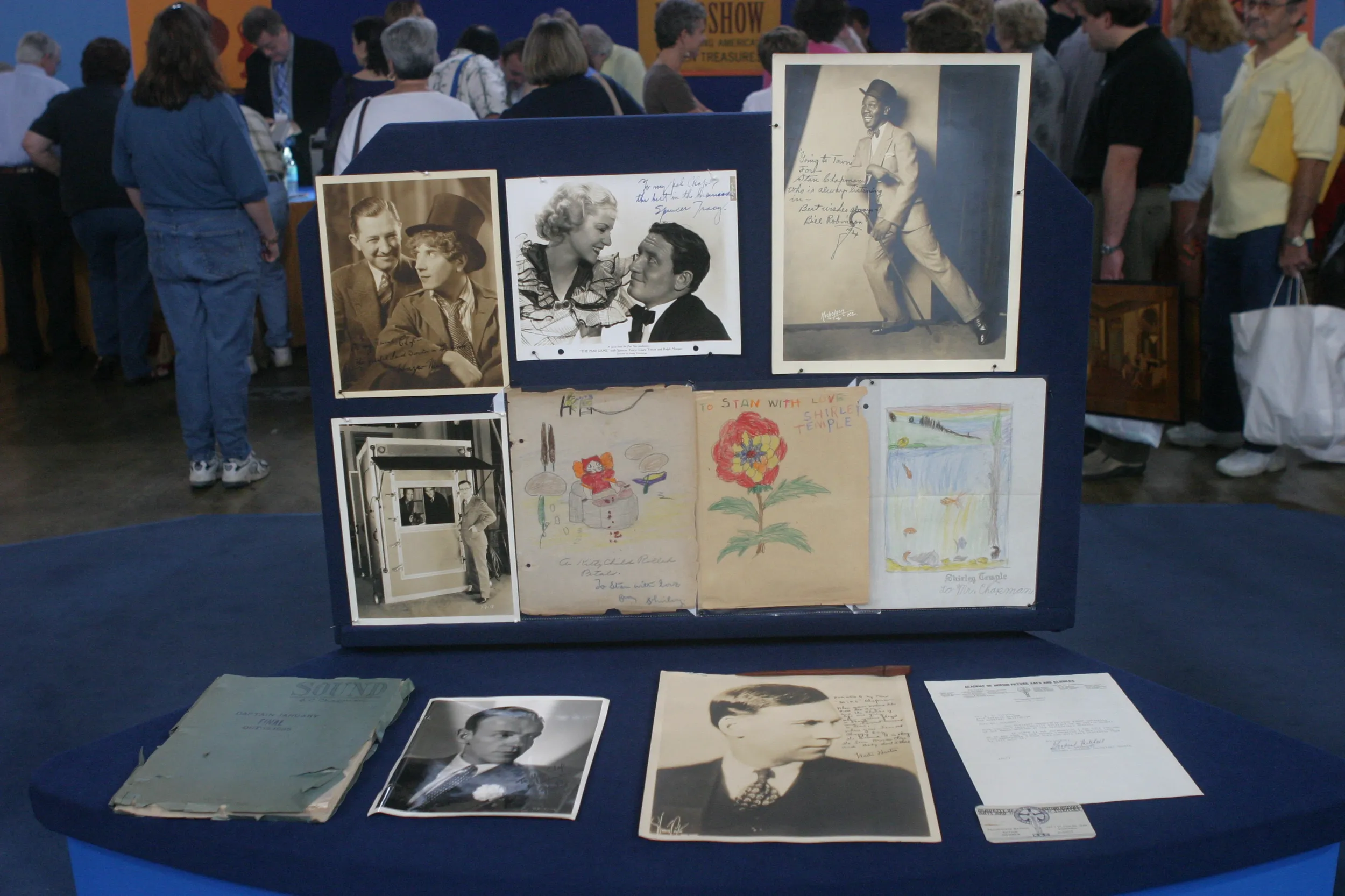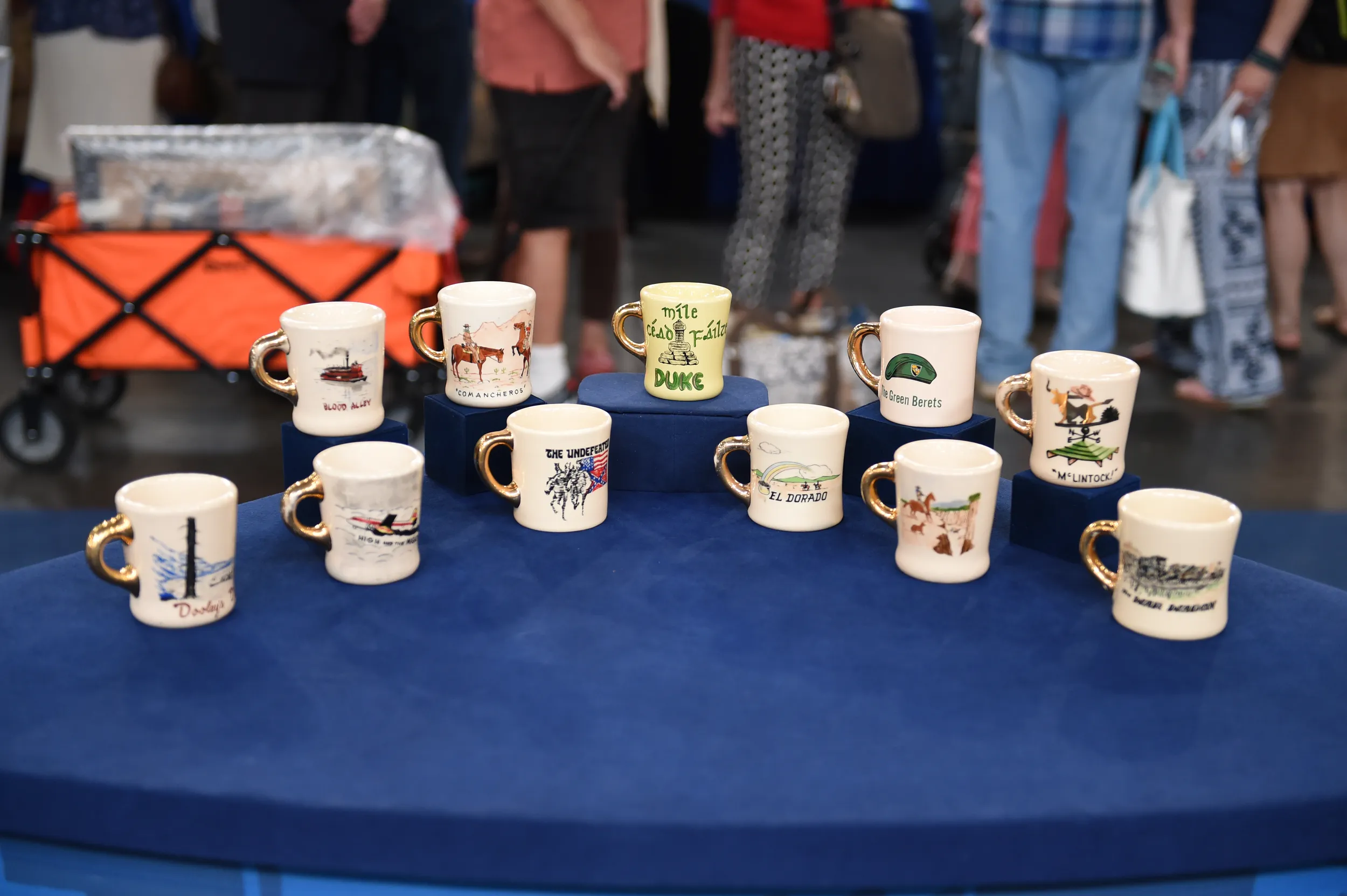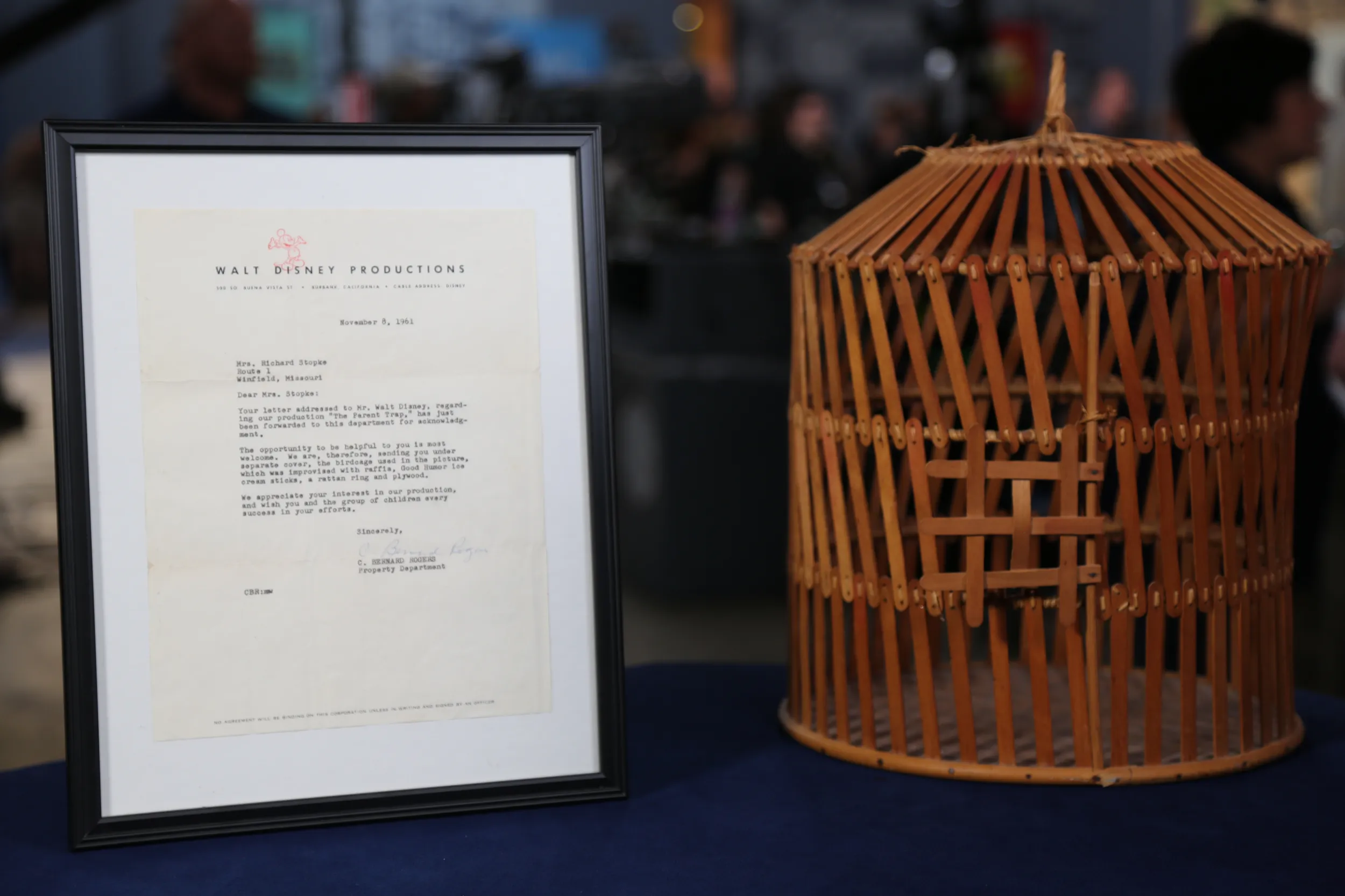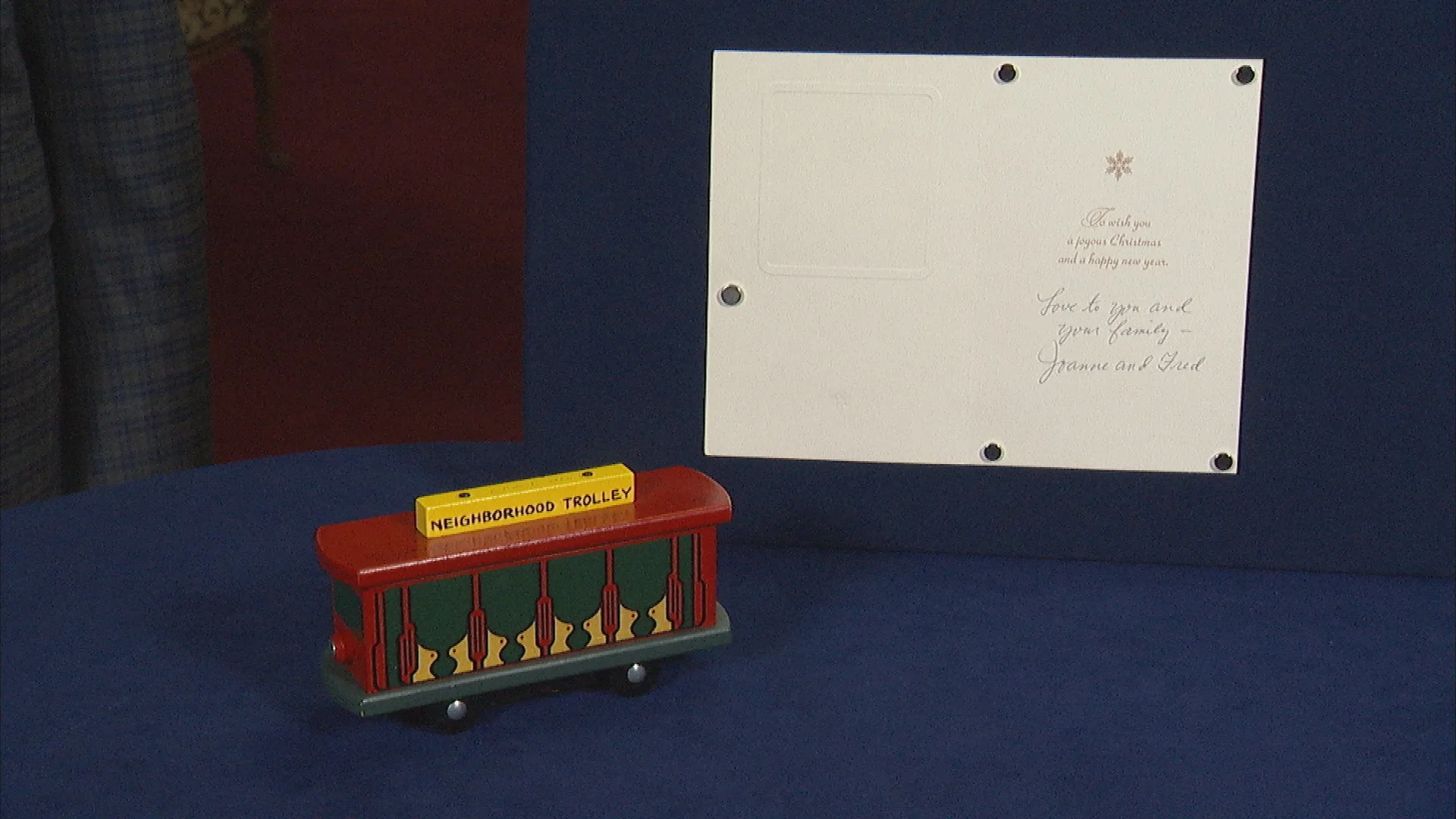GUEST: My grandfather worked for Hal Roach Studios. He was kind of second-in-command there. These are from Babes in Toyland with Laurel and Hardy. And these were the toy soldiers that were done with stop-action. So it was a 16th of an inch, and then they filmed it in 16th of an inch, and filmed it. And because my grandfather was involved in this particular part of it, we got ten of them.
APPRAISER: And you have five here. Where are the other five?
GUEST: Uh, with my nieces.
APPRAISER: Ah. There are actually a couple of different names for the movie. You... I think you call it Babes in Toyland?
GUEST: Babes in Toyland. The March of the Wooden Soldiers. It was changed over the years as Disney picked it up, and it was colorized, and so that was changed again. But originally, it was a musical. Disney wanted to pick it up. And they said it was too expensive to animate. And so that's when Hal Roach picked it up and decided to do it live-action.
APPRAISER: You're so on the money. Actually, it was an operetta.
GUEST: Yes.
APPRAISER: Done in 1903 by Victor Herbert.
GUEST: Mm-hmm.
APPRAISER: And when Hal Roach bought the rights, he decided to do this, and it was most famously a Laurel and Hardy film.
GUEST: Yes.
APPRAISER: And they're "insert sight gag here," because, of course, the picture of them dressed up as soldiers, as well.
GUEST: Yes.
APPRAISER: There were a lot of special effects done where they're shrinking Laurel and Hardy down to the size of these scale-model soldiers.
GUEST: Yes.
APPRAISER: So it was early days in special effects. This is a very key moment in film history for this particular type of technology. While we have examples in very, very early optics in cinema...
GUEST: Mm-hmm.
APPRAISER: Of some stop-motion animation as early as the 1890s-- 1897 is one of the first examples.
GUEST: Right.
APPRAISER: What happened the year before this film came out in 1934 is you have a stop-motion animation movie that was all the rage. King Kong jumped the technology of stop-motion animation to the very next level. So to have a piece that ties into that kind of important historic piece of movie technology so early, also from a Laurel and Hardy film...
GUEST: Yes.
APPRAISER: It's kind of ticking a lot of boxes for me, and I think collectors would be very into them.
GUEST: Oh, good!
APPRAISER: Because it's kind of early days of, of special effects technology, people go crazy for these early pieces and then you also have the bugler...
GUEST: Yes.
APPRAISER: Who's different from the rest. And I think, if you were to have them all together, he might be the favorite, because we know that there's probably fewer of him than there are of the guys with the rifles.
GUEST: Right, my mother gave away the drummer.
APPRAISER: (gasps)
GUEST: I wasn't happy, but he was beautiful. Yeah, she gave it to one of the people taking care of her.
APPRAISER: Have you ever had these appraised?
GUEST: Uh, once, but I don't think he was too much into it, so he didn't know. I think he said five of them would be maybe $1,000.

